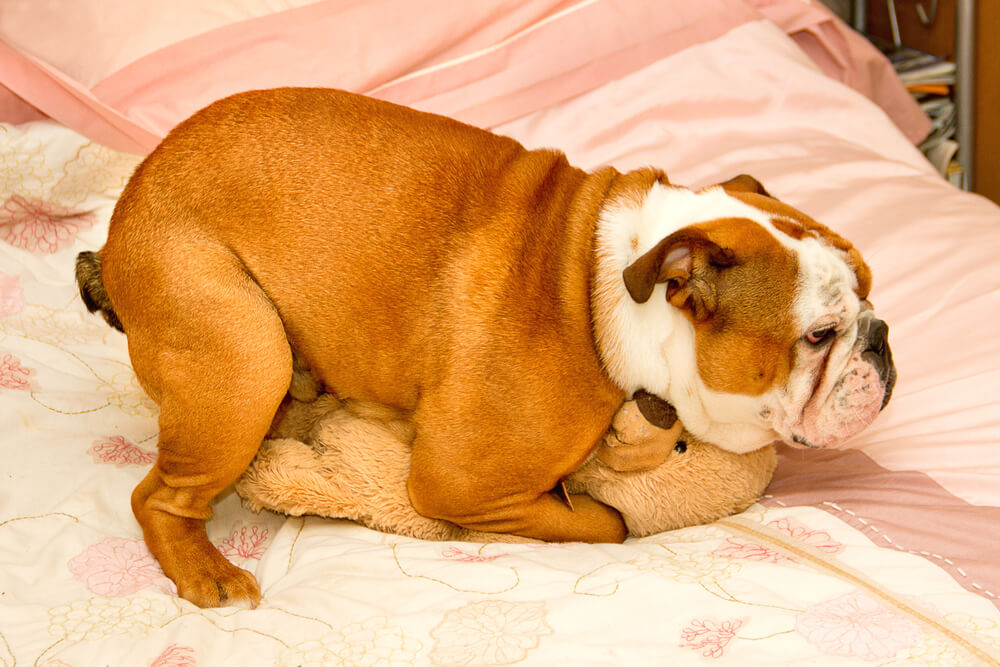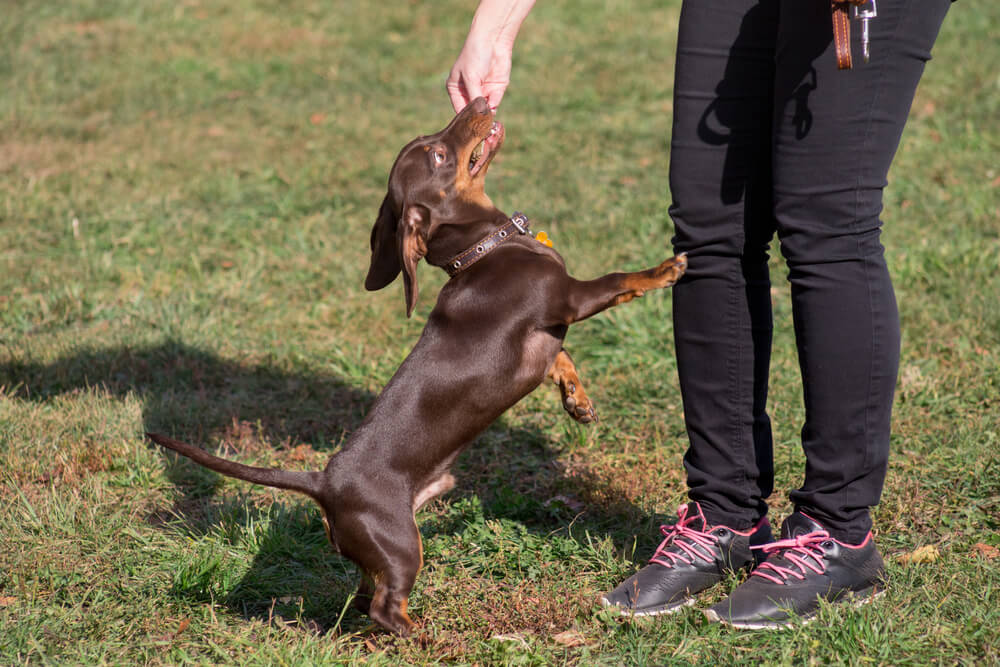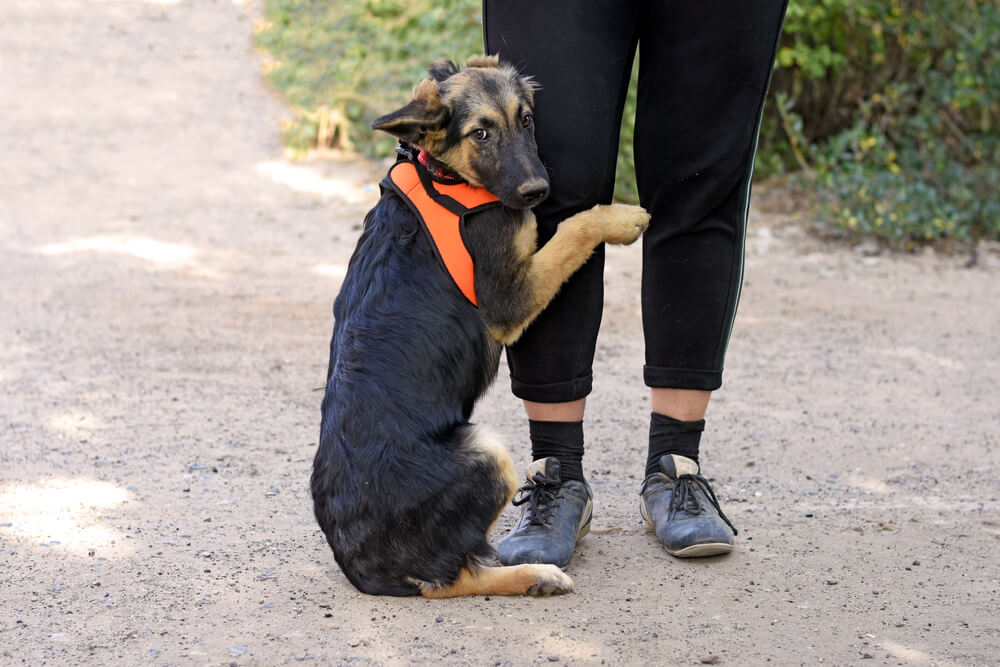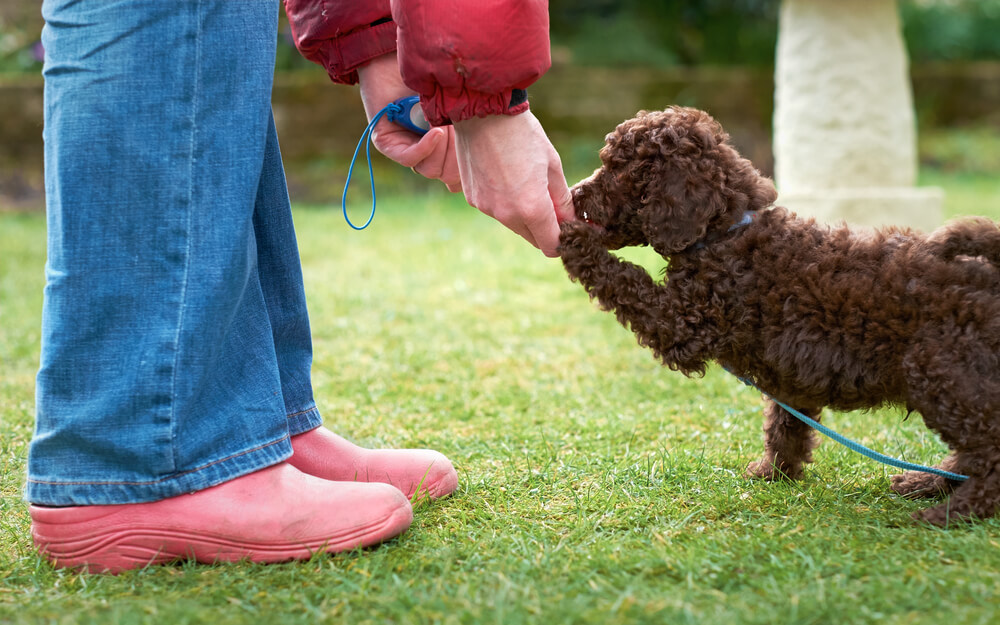How To Stop Your Puppy From Humping?

Table of Contents
Listen To The Article
Introduction to How To Stop Your
Puppy From Humping?
Humping is a frequent (and embarrassing) behavior you may observe in your dog.
Sometimes dogs hump other dogs, sometimes they hump a stuffed animal or a sofa and worst they hump a person’s leg.
It can be awkward when your dog is humping something in front of other people.
It’s particularly cringe-worthy if your dog likes to hump people, especially if the “victims” don’t have or don’t like dogs.
Although humping is usually a harmless behavior, there are ways to discourage your dog from humping everything in sight.
But with a little patience, owners of rambunctious, hump-happy dogs can learn to understand why their dog is humping, and how to productively redirect to curb the behavior.

Why Do Dogs Hump?
Humping is a very common behavior.
You are far from alone in having a hump-loving dog and, despite appearances, it’s not necessarily sexually motivated.
The most obvious answer is for sexual stimulation.
Intact male dogs may hump as a result of hormonal impulses or pleasure-seeking stimulation, but more often than not, humping is related to non-sexual arousal.
Although many views humping as an explicitly sexual act, it can also be used as a way to show power or rank.
Dogs, whether as puppies or adults, often use humping as a way to assert their authority over others; be it other dogs, other animals, humans, or objects.
Here are some of the main reasons why dogs hump:
Out of Habit
Research has suggested that even after a dog has been spayed or neutered, the memory of past sexual acts can leave a lasting impression.
It’s for this reason that even after your puppy has been neutered or spayed, they may continue to hump for a few months after the surgery.
In fact, some pets can develop this habit and then continue to hump for years.
It can even develop into a chronic habit that becomes harder to curb each year that it continues.
Exerting Dominance
Humping is a way for both dominant and non-dominant dogs to exert control over other animals.
Veterinary experts hypothesize that some nondominant pups with dreams of being the alpha can achieve an intrinsic reward from humping, in that it feels natural for them to get a “high” from asserting their dominance.
It’s not just male dogs that hump as a means of exerting dominance; females can also use this habit as a way of being an alpha.
Intact females have a higher level of testosterone in their bloodstream than their spayed counterparts, making these dogs more likely to perform sexual behaviors.
Increased Serotonin Levels
This “high” can be a result of increased levels of serotonin, a chemical largely responsible for regulating mood, behavior, sexual desire, and social behavior in a dog’s brain.
If your pup is feeling stifled, they may start humping as a way to balance themselves out.
This can be common in pets who don’t exercise enough or who have limited social interaction.

At What Age Do Puppies Start To Hump?
As a puppy starts to walk at 2-3 weeks of age, they can sometimes display humping or similar behavior.
So by the time you bring your puppy home at 8 weeks, which is the recommended length of time a puppy should spend with its mother and siblings, this might already have developed into a humping habit.
As your dog reaches sexual maturity and is capable of breeding at around 6 months, these urges may become stronger and more frequent.
However, the breed of your dog plays an important role in the timescales for hitting puberty.
Generally, smaller dogs mature much quicker than larger dogs.
For example, a miniature poodle may become sexually mature at 6 months, but a Newfoundland may take 15 months or more.
But not all puppies will start to hump so early in life.
Some will develop the behavior as they hit puberty and others never will.
To minimize unwanted humping behavior, you should aim to tackle the problem in those early puppy months.
This will prevent the behavior from becoming an embedded habit.

When Is Humping A Problem?
Brief moments of humping between dogs can be a normal part of the play.
For instance, while running and playing, dogs might take turns mounting each other in a harmless expression of excitement.
But, some dogs don’t like to be mounted so in the interest of avoiding any potential conflict, it’s worth doing some work to avoid even this mild form of mounting.
Humping will also be easier to curb if you catch it early, instead of waiting until the behavior is an embedded habit.
While you might want to laugh the first time you see your dog hump, in the longer term, it’s best to step in and redirect the behavior immediately.

How Can You Stop Your Dog From Humping
Regardless of the age or gender of your dog, there are steps you can take to halt their humping habit.
The most common way to stop humping is to have your dog neutered or spayed.
Typically, puppies will be neutered around six months of age.
As mentioned above, however, neutering and spaying don’t always solve the problem.
It can take a dog some time to discover that the act of humping simply isn’t the same after their surgery.
If your dog has been spayed or neutered and is still humping regularly, the primary way to achieve behavior modification is through dog or puppy training.
Most training programs aim to get your dog to work for what they want while installing you as the leader of your household.
There are 12 general rules for training dogs, but the basic premise is that the experience should always be rewarding and positive for both you and your pet.
Each dog is different, and sadly there’s no “perfect” way to train a dog.
Should you want to bring in an expert to help with puppy training or dog training, talk with your friends, veterinarian, and family members to solicit reviews of local trainers.
If you choose to sign up for a group training class, don’t be afraid to ask to sit in on a session before committing, or walking away from a class that doesn’t meet your needs.
How to stop dog-on-dog Humping
You will need to work harder to convince your adult, well-practiced dog than a young, inexperienced pup to quit climbing on other dogs.
Additionally, there’s more potential for aggression with a mature dog if the recipient of unwanted attention objects to being mounted.
With both young and mature dogs, you can use time-outs to let your dog know that mounting behavior makes all fun stop.
A tab (a short, 4- to 6-inch piece of the leash) or a drag-line (a 4- to 6-foot light nylon cord) attached to your dog’s collar can make the implementation of time-outs faster and more effective (and safer) when you have to separate dogs.
Set up your dog for a play date with an understanding friend who has a tolerant dog.
Try to find a safely fenced but neutral play yard, so that home team advantage doesn’t play a role.
If a neutral yard isn’t available, the friend’s yard is better than your own, and outdoors is definitely preferable to indoors.
When you turn the dogs out together, watch yours closely.
It’s a good idea to have some tools on hand to break up a fight, should one occur.
If there’s no sign of mounting, let them play.
Be ready to intervene if you see the beginning signs of mounting behavior in your dog.
This usually occurs as play escalates and arousal increases.
When you see the first glimmerings of mounting behavior, try subtle body-blocking.
Every time your dog approaches the other with obvious mounting body postures, step calmly in front of your dog to block him.
If you’re particularly coordinated, you may be able to simply lean your body forward or thrust out a hip or knee to send him the message that the fun’s about to stop.
This is more likely to work with the younger dog, who is less intense about his intent to mount.
Be sure not to intervene if your dog appears to be initiating appropriate canine play with enough time-out repetitions, most dogs will give up the mounting, at least for the time being.
For an older dog for whom the habit is well ingrained, you may need to repeat your time-outs with each new play session, and you may need to restrict your playmates to those who won’t take offense to his persistently rude behavior.
With a pup or juvenile, the behavior should extinguish fairly easily with repeated time-outs, especially if he is neutered.
Just keep an eye out for “spontaneous recovery,” when a behavior you think has been extinguished returns unexpectedly.
Quick re-intervention with body blocks or time-outs should put the mounting to rest again.
How to stop dog-on-human mounting
This embarrassing behavior is handled much the same way as dog-dog mounting.
One difference is that you must educate your guests as to how they should respond if your dog attempts his inappropriate behavior.
Another is that some dogs will become aggressive if you physically try to remove them from a human leg or other body parts.
It works best to set up initial training sessions with dog-savvy friends who agree to be human mounting posts for training purposes, rather than relying on “real” guests to respond promptly and appropriately, at least until your dog starts to get the idea.
For your average, run-of-the-mill human mounting, ask your guests to immediately stand up and walk away if your dog attempts to get too cozy.
Explain that it is not sexual behavior, but rather attention-seeking, and anything they try to do to talk the dog out of it or physically restrain him will only reinforce the behavior and make it worse.
You can also use a light line here, to help extricate your friends from your dog’s embrace, and to give him that oh-so-useful time out.
If the behavior is too disruptive, you can tether your dog in the room where you are all socializing, so he still gets to be part of the social experience without repeatedly mugging your guests.
If your dog becomes aggressive when thwarted, he should be shut safely away in his crate or another room when company comes.
Social hour is not an appropriate time to work on any aggressive behavior; it puts your guests at risk and prevents all of you from being able to relax and enjoy the occasion.
How to stop dog-on-object mounting
Dog owners are often surprised to discover that some dogs will masturbate.
Our diminutive Dusty, pillager of the sofa pillows, discovered early in life that if he approaches someone who was sitting with their legs crossed, the person’s foot was just the right height for him to stand over a raised human foot and engage in a little self-pleasuring.
As soon as we realized what he was doing, we squelched that behavior by removing his opportunity; we’d put both feet on the floor and that was that.
There’s really no harm in canine masturbation, as long as the objects used are reasonably appropriate (i.e., dog toys, as opposed to your bed pillows!), and it doesn’t become obsessive.
Removing an inappropriate object or resorting to cheerful time-outs can redirect the behavior to objects that are more acceptable, such as a stuffed dog toy.
If your dog practices the behavior to the degree that it appears obsessive a not uncommon problem in zoo animals, but rare in dogs then you may need some behavior modification help.
Behavior is generally considered obsessive when it is causes harm to the organism or interferes with his ability to lead a normal life.
For example, if your dog is rubbing himself raw on the Berber carpet, or spends 20 hours a day having fun in the bedroom, you’re looking at obsessive behavior.
There are behavior modification programs that can help with canine obsessive-compulsive disorders, and they often require pharmaceutical intervention, especially if the obsession is well-developed.

Is Humping A Sign Of Dominance?
It’s widely assumed that all dogs mount to secure their place in the social hierarchy.
While some behaviorists believe humping is a display of dominance, others see no signs to support the theory.
People often think more dominant dogs will mount more timid dogs.
But others argue more often than not, it’s the more anxious or socially insecure dogs that resort to humping.
The stress of the situation becomes so overwhelming, they search for an outlet that triggers the humping.
Perhaps some dogs do use humping as a form of dominance, but until we see concrete evidence to back up this claim we wouldn’t want to speculate.

Puppy Training
We know that it can be awkward when your pet performs this somewhat unsightly type of behavior, but there are a lot of factors at work when a dog starts humping.
The first step is figuring out why your pet is humping before you can start treating the issue with lifestyle adjustments, spaying or neutering, training, or medication.
Whether the underlying reason for your pup’s humps is aggression towards other males, stress or overstimulation, or simply attempts to communicate with another dog, puppy training is an available solution to help curb the problem.



